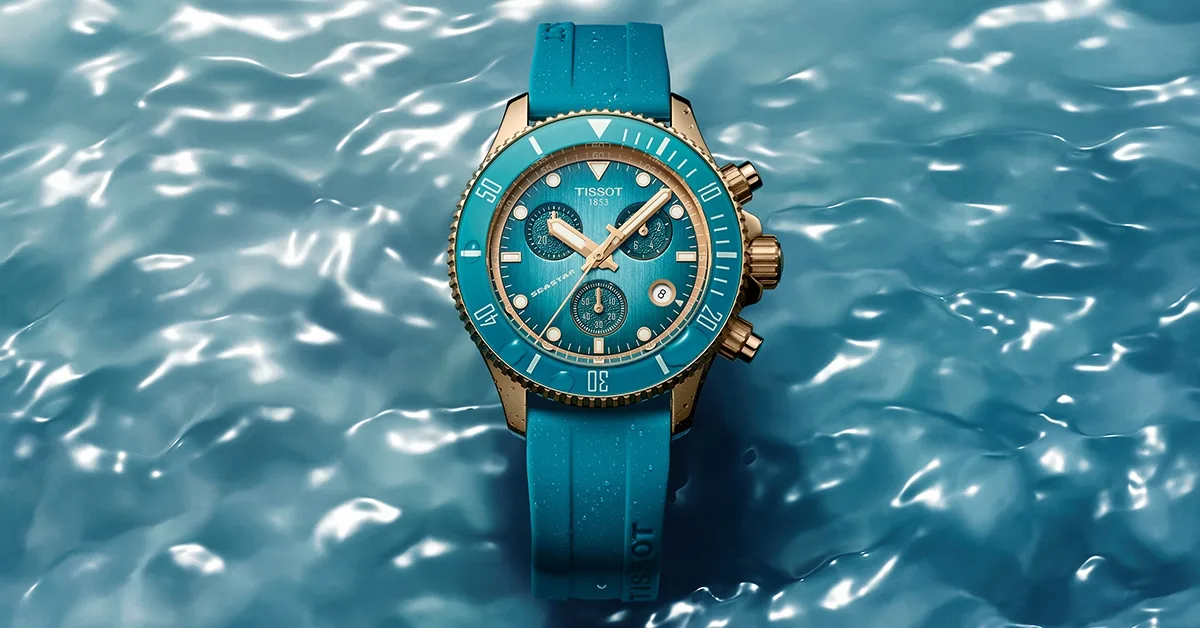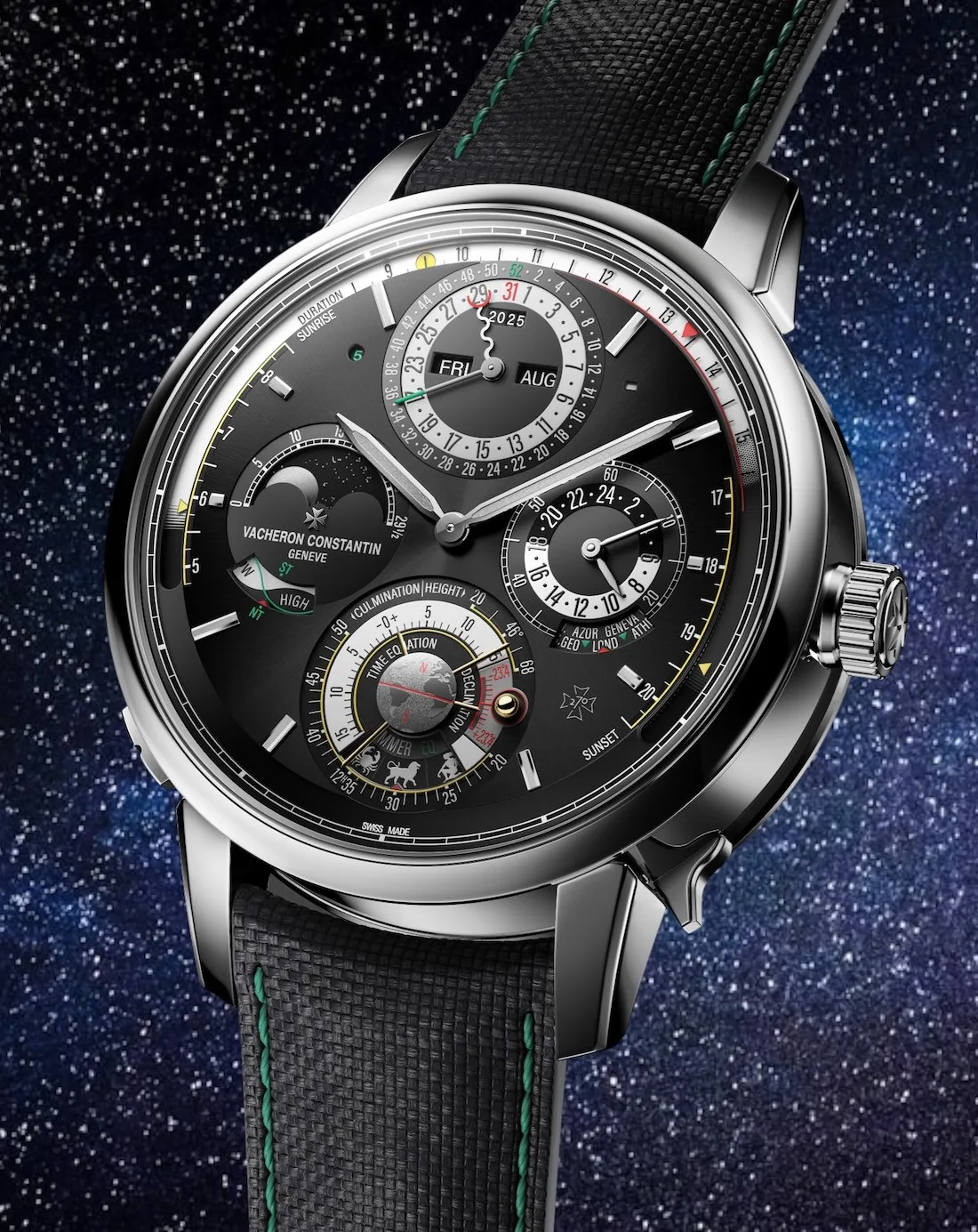Although one could argue that the use of a block of stone as a base on which to read the time goes back a few millennia (think sun clocks), in terms of horology worn on the wrist, it is not until the 1960s that we find watches with stone dials.
The reasons are simple enough, materials such as lapis lazuli, malachite and tiger’s eye, while undoubtedly beautiful, are very difficult to cut thinly, which, added to the thickness of watch movements until the middle of the 20th century, meant that watches with stone dials were not a good – or feasible – idea. That was until Piaget came up in 1957 with the ultra-thin hand-wound calibre 9P (just 2mm), which allowed them to play with different minerals, resulting in an innovative 1963 collection in stones where the dials were just 1mm thin. A lot of material was wasted as it often shattered in the production process, but Piaget persevered and, by the end of the decade, was using more than 30 different varieties for its dials.

Other brands quickly followed suit. Rolex introduced onyx, agate, jasper and many others to their Datejust and Day-Date ranges, while Cartier used them in most of its lines, such as Tank, Santos and Panthère. The other grand dames of watchmaking: Vacheron Constantin, Audemars Piguet and Patek Philippe also added them to their collections, along with many others. From carnelian to lapis lazuli, the 1970s was THE decade of the stone dials. By the end of the 1980s though they had gone back to the fringes of the horological world, except for a few brands such as Cartier and Bulgari.
Fast forward a few decades and mineral dials are everywhere again… with a new addition: meteorite. Last year, Bovet 1822 issued the 19Thirty Blue Meteorite, with a dial made from the 4.5 billion years old Gibeon alien rock. The transparent blue PVD coating was an industry first, and one that made the watch truly look like a slice of heaven. Omega’s latest adventure into the realm of extra-terrestrial materials comes as part of the Constellations collection, with four models available in five different sizes and a variety of materials for case and bracelet, all of them with dials from the Muonionalusta meteorite. Even Nivada Grenchen has looked outside the confines of our planets for its new F77 collection, adding meteorite to the other stone versions, although is only available during the pre-order period, that is, before the launch date on 25th April 2024.

Going back to more earthy materials, Piaget went back to its archives for its 150th anniversary and presented at Watches & Wonders the remarkable Swinging Sautoir collection, first launched in 1969, and now reinterpreted with a more contemporary flavour without losing its vintage identity.

the Jaquet Droz Dragon Automaton shows off a dial made from a single piece of lapis lazuli. Considering this is a 45mm watch and the sliver of the mineral less than one millimetre thick, it must have been incredibly difficult to work with it, avoiding chipping or breaking the brittle material. The dragon has been hand-sculpted in grey gold, polished and individually engraved.

Bulgari has recently added a stunning malachite dial model to its jewellery-inspired Lvcea collection. The stone comes from leftovers of other watches, which adds moral greenness to the watch. The pieces are applied as in marquetry, creating a beautiful pattern. Diamonds are used for the hour markers and all around the bezel.

Continuing the trend, to mark the 100th anniversary of Watches of Switzerland, Bulgari has released two exclusives, one of which is the Serpenti Seduttori with the dial in lapis lazuli, surrounded by 38 diamonds in the bezel. At the back, an engraving by Watches of Switzerland that personalises every watch.
Jacob & Co also released new models in malachite and lapis lazuli and added one extra in onyx, all with colour-matching alligator straps and all of them within its Palatial Classic collection. The use of these rocks, together with design details such as the date window at 12 o’clock and power reserve disk at six give them a certain retro flavour that is very much in vogue today.

The latest two additions to Dior’s La D de Dior Étoile des Vents Collection include one in malachite adorned with pink gold stars set with 48 diamonds, the same gemstone used in the crown and to frame the dial. Another haute couture house to release watches with hard stone dials has been Chanel, which presented stunning pieces at Watches & Wonders 2024, among them, the Mademoiselle Privé Bouton Gabrielle. The design is based on the iconic Chanel button, here in 18kt yellow gold set with 36 brilliant-cut diamonds, featuring the profile of Gabrielle Chanel in the same precious metal, on an onyx plate. As you open it, you discover an elegant black lacquer dial framed by a bezel set in 18kt yellow gold with 33 brilliant-cut diamonds.

MB&F’s first watch devoted to women, the Legacy Machine Flying T, has been enhanced in several occasions by the use of hard stone on its dials. Models in lapis lazuli, malachite, tiger’s eye, anyolite (Bangkok exclusive) and onyx have enriched a collection that wowed the community of watch lovers since the day it launched back in 2019.
The number of watchmakers adding hard stone dials to their collections keeps growing these days. If auction values are anything to be guided by, last year at the Phillips Geneva sale in November, an F.P. Journe Optimum with a jade dial sold for 533,400 CHF, over an estimate of 200,000 to 400,000 francs. So maybe it is time to start making your watch collection rock solid.

















Show Comments +